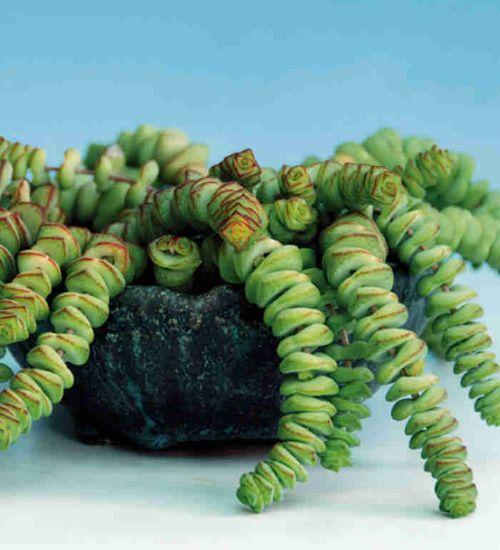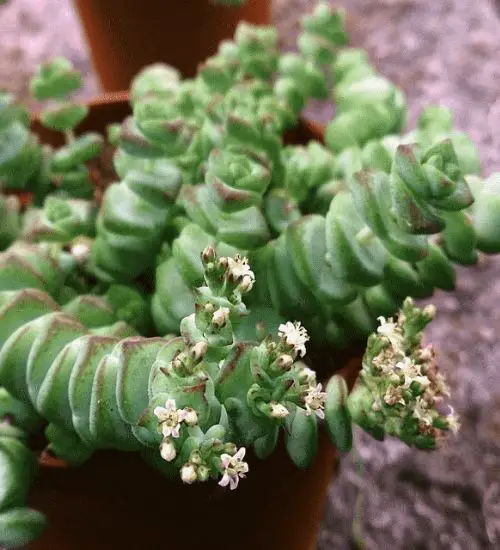Sun: full sun to partial shade
Water: Typical water needs for a succulent
Temperature: Zone 11a from 40° F to 45° F (4.4 ° C to 7.2° C)
Winter Survival: Not cold hardy
Propagation: offsets
Flower: in the Winter.
Flower Type:
Toxic: Generally non-toxic to humans but can be toxic to animals.
Dormant: summer
Space Requirement: Indoors & Outdoors
Common Problems: Plants may rot if overwatered, pests
Where to buy Crassula marnieriana?
Basc Care for Crassula marnieriana
Watering
Can you water your succulent more than what its need? The answer is yes and no. In extreme conditions, you can water your plants more often when you notice the soil is completely dry.
One simple tip for you is that you can use some online apps to check the soil status before you go water your succulents. I would recommend the ThePlantsCheck app, it has some nice features there.
Fertilizing
Only feed this succulent during its active growing seasons which means winter. Use the right fertilizer applied in the right amounts. Applying half-strength balanced fertilizer every month or so is recommended for optimal results.
Do not fertilize during summer as the plant is dormant.
Sun & Location Requirements for "Worm Plant"
Crassula marnieriana requires full sun to partial shade in order to stay healthy and vibrant. Always keep an eye on the temperatures and light levels as too much direct sunlight can be damaging to this type of succulent. If you notice any signs of distress, try moving it to a shadier spot within your garden or home.
As per this succulent profile, it is only able to stay healthy when the environment temperature is above the range of zone 11a from 40° F to 45° F (4.4 ° C to 7.2° C).
When temperatures drop below freezing, it is important to take precautions to protect Crassula marnieriana from the cold. Insulating and providing adequate drainage for the plant are key elements in helping it survive winter weather. Wind and sun exposure should also be minimized to prevent frost damage.
Crassula marnieriana also benefits from some indirect light throughout the day as well, so make sure you give it enough space to soak up light without becoming too exposed to heat.
Propagation
One way to propagate Crassula marnieriana is by offsets. Taking an offset from the mother plant and potting it into soil will give you a brand new succulent with minimal effort.
Propagating with offsets is a great way to get more plants from the same mother plant. All you have to do is cut away an offset and pot it in soil, and soon enough you’ll have a brand-new Crassula marnieriana!
Toxicity

If you’re looking to add a bit of greenery to your home or office, be sure to do your research before purchasing Crassula marnieriana. This lovely plant may have some toxic properties when ingested by animals, so it’s important to keep them away from curious pets.
Pests and Diseases
Crassula marnieriana can be affected common pests and diseases like most of the other succulents such as mealybugs.
If you do spot any of pest signs, you can treat your succulent using below methods.
- Mealybugs: quarantine, clean infected plants, soapy water.
Besides that, to prevent serious health issues from happening, keep your succulent in a well-ventilated area and check it regularly for any signs of pests or health problems.
photo
1: https://greenfreshflorals.com/products/worm-plant-4


